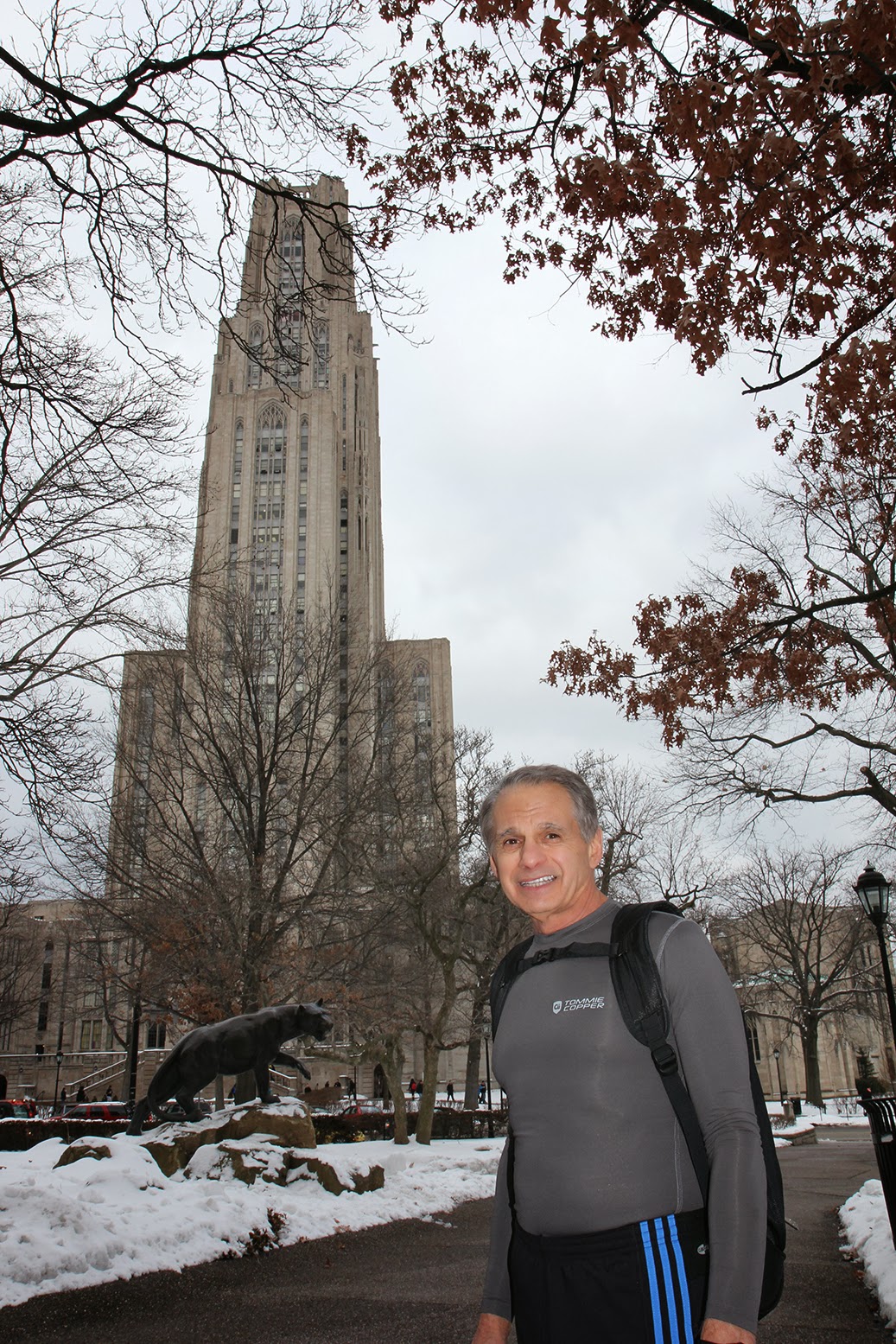Between 70 triathlons and eight Ironman triathlons, the man has covered far more than 3,000 race miles by swimming, biking and running the equivalent of coast to coast America. . . and countless more training miles.
But 3.66 miles straight up Africa’s Mount Kilimanjaro?
Leave it to Joseph C. Maroon, M.D., to utilize this newfound attempt at, well, upward mobility to strengthen his knowledge base as both a man of medicine and science.
Dr. Maroon is serving as the medical director for a group that includes 10 people with disabilities and almost a dozen others climbing Kilimanjaro, one of the world’s tallest peaks and noted as the globe’s highest free-standing mountain. The ascent begins today in Tanzania and is scheduled to require eight days, primarily for the climbing party to acclimate to the changing temperatures (90 to -20 degrees) and 19,341-foot altitude – which causes shortness of breath, headaches and nausea known as acute mountain, or altitude, sickness.
“The highest mountain I’ve climbed is Mount Washington,” joked Dr. Maroon, UPMC neurosurgeon, professor and vice chairman of the Department of Neurological Surgery at the University of Pittsburgh School of Medicine, and longtime team neurosurgeon to the Pittsburgh Steelers. “To do it with a group of amputees and people with disabilities is certainly worthwhile. It’s never been done before with this kind of group.
“It’s not a technical climb, but I’m apprehensive,” he added of the walking route from the tropical bottom to the iced-over Uhuru Peak atop this volcanic formation. As for his fitness, he just finished the famed Hawaii Ironman last fall, so that isn’t much of a problem. “I’ve been climbing the 42 floors of the Cathedral of Learning steps every other day, up and down, up and down, to try to get as acclimated as I can. And still operate. Let’s just say I have a good ‘altitude’ about it.”
The Cathedral, by the way, rises barely one-fifth of a mile – Kilimanjaro towers about 20 times higher.
Scaling new heights, Dr. Maroon plans to study the effects of nitric oxide on this group of mountain climbers. Tablets will go under a climber’s tongue, and then he’ll monitor their blood pressure and oxygen saturation, not to mention see if medication reduces the altitude sickness that regularly afflicts those who ascend Kilimanjaro – quickly or, as with this group, gradually over seven days.
The group’s organizer is Rajesh Durbal, a triple amputee who went from IT worker to motivational leader, author and athlete. Durbal put together a four-city, 34-day African adventure – with the Kilimanjaro climb in between Cape Town and Johannesburg visits – so those with disabilities not only can show their capabilities, but attempt to send their message throughout the continent.
The friendship between Dr. Maroon and Durbal goes back to the Hawaii Ironman three years ago.
“I got to mile 130,” Dr. Maroon explained of the final leg of the 2.4-mile swim, 112-mile bike race and 26.2-mile marathon of this 140.6-mile triathlon, “and I quit. Couldn’t do it. It’s pitch black, in the lava fields of Kona. By the time I’m out there, it’s 9 o’clock at night – and you start at 7 in the morning.
“I hear a ‘click-click, click-click.’ Then a hand reaches out and touches my shoulder. And a voice says, ‘Hey, you can’t quit. Follow me.’ “ Just then a car passed them, and its headlights illuminated Durbal’s carbon-fiber prosthetic legs and his right arm, all three limbs amputated in childhood surgeries due to birth complications. Dr. Maroon finished that race, and the two remain close. He invited Durbal to speak to the Steelers on their way to Super Bowl XLV.
Just as Durbal became the first triple-amputee to finish the Ironman, no group of people with disabilities or limb loss has been previously known to climb Kilimanjaro. So when Durbal called Pittsburgh a few months ago to ask his friend to serve as medical director for this unprecedented climb, it didn’t take long to assent. Now comes the ascent.
Dr. Maroon left Pittsburgh on Tuesday, flying to Addis Ababa, Ethiopia, and then to Tanzania – where the group gathered Wednesday. They are scheduled to begin their climb today and return sometime between Feb. 27-28.
“The theme of the trek is ‘One’s Attitude determines one’s Altitude,’ ” Dr. Maroon said.










